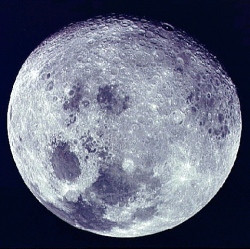
Building a supercomputer on the moon would be a mammoth technical undertaking, but a University of Southern California graduate student thinks there’s a very good reason for doing it: help alleviate a coming deep-space network traffic jam that’s had NASA scientists worried for several years now.
Ouliang Chang floated his lunar supercomputer idea a few weeks ago at a space conference in Pasadena, California, Wired Enterprise reports.
The plan is to bury a massive machine in a deep dark crater, on the side of the moon that’s facing away from Earth and all of its electromagnetic chatter. Nuclear-powered, it would process data for space missions and slingshot Earth’s Deep Space Network into a brand new moon-centric era.
“Once the physical infrastructure backbone is laid out, I suspect it would look much like the monolith excavation site in Clarke and Kubrick’s 2001: A Space Odyssey,” says Chang’s course supervisor Madhu Thangavelu, of USC’s Viterbi School of Engineering.
The Deep Space Network is a network of 13 giant antennas located in the U.S., Australia, and Spain that gather data and talk to spacecraft in, well, deep space. These space missions are already fighting for bandwidth on this overloaded network and most of the data has to get back to Earth for processing. With a lunar supercomputer, Chang says, that could change.
His supercomputer would run in frigid regions near one of the moon’s poles. The cold temperatures would make cooling the supercomputer easier, and allow it to use super-efficient superconductive materials to move around electricity. Although it’s not clear how much water could be found on the moon’s poles, Chang envisions a water-cooled supercomputer.
How much would this Lunar supercomputer cost? Well, Chang and Thangavelu say it costs about $50,000 per pound to ship materials to the moon. Add to that the cost of digging out and building out the sub-lunar supercomputer center, cooling system and nuclear power generator, and you can easily envision a project in the $10 billion to $20 billion range, never mind the cost of building a lunar base station. That would easily make it the most expensive supercomputer ever built.
